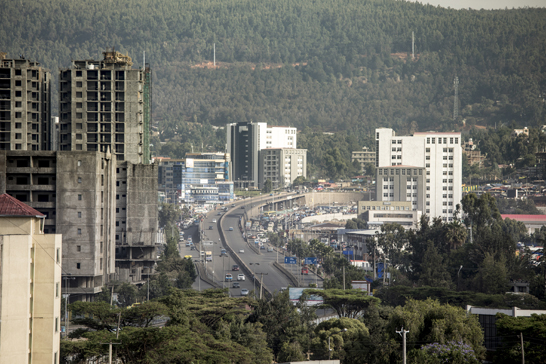Experience incredible value in some of the world’s most affordable destinations
Introduction: Finding Affordable Paradise in 2025
Have you ever dreamed of escaping the financial pressures of everyday life while experiencing rich cultures and breathtaking landscapes? In today’s world of rising costs, finding the cheapest places to live without sacrificing quality of life might seem impossible. Yet across the globe, there are still remarkable destinations where just $100 a week can cover your food, accommodation, transportation, and entertainment.
This comprehensive guide explores five countries where your dollar stretches incredibly far, allowing you to live comfortably on a budget that would barely cover groceries in most Western nations. Whether you’re a digital nomad seeking to extend your runway, a retiree looking to maximize your pension, or simply an adventurer hoping to experience the world without breaking the bank, these cheapest places to live offer unparalleled value.
What Makes a Country Affordable?
Before diving into specific destinations, it’s important to understand what creates these pockets of affordability:
- Local economic conditions: Countries with lower average incomes typically have lower costs for goods and services
- Currency exchange rates: Your home currency may have strong purchasing power in certain regions
- Distance from tourist hotspots: Venturing beyond popular destinations can dramatically reduce costs
- Local vs. expat pricing: Living like a local rather than maintaining Western standards significantly lowers expenses
- Supply and demand dynamics: Areas with less foreign investment often maintain lower cost structures
Now let’s explore the five most affordable countries where your money goes remarkably far in 2025.
1. Thailand: The Affordable Land of Smiles
Thailand offers an incredible combination of natural beauty and affordability
Climate and Location
Thailand’s strategic location in Southeast Asia provides the perfect blend of accessibility and exotic appeal. The country experiences three distinct seasons:
- Hot season (March-June): Temperatures rise to 35°C (95°F) with high humidity
- Rainy season (July-October): Frequent but brief showers with lush, green landscapes
- Cool season (November-February): The most comfortable period with mild temperatures between 20-30°C (68-86°F)
This diversity allows you to choose your ideal climate by simply adjusting your location within the country.
Living Costs Breakdown
On a $100 weekly budget in Thailand, here’s how your expenses might break down:
- Accommodation: $30-40/week for a basic studio in smaller towns
- Food: $25-30/week eating primarily at street vendors and local markets
- Transportation: $10-15/week using shared transportation
- Entertainment: $15-20/week for basic activities and occasional treats
For food lovers, Thailand is a paradise. Street vendors offer delicious dishes like pad thai, som tam (spicy papaya salad), and mango sticky rice for just $1-2 per meal. Fresh fruit smoothies cost less than a dollar, while local markets provide affordable ingredients if you prefer cooking at home.
Best Areas for Budget Living
While Bangkok and tourist hotspots like Phuket can be pricier, these areas offer exceptional value:
- Chiang Mai: This northern city offers a perfect blend of traditional culture and modern amenities. A simple studio apartment costs $100-200 monthly, while the abundance of affordable cafés caters to the growing digital nomad community.
- Isan Region: Thailand’s northeastern provinces provide an authentic experience with minimal tourism impact. Costs here are among the lowest in the country.
- Hat Yai: This southern commercial hub offers urban conveniences without the inflated prices of beach destinations.
Money-Saving Tips
To stretch your budget even further in Thailand:
- Use public transportation like Bangkok’s efficient Skytrain or local songthaews (shared taxis)
- Shop at morning markets when produce is freshest and cheapest
- Consider long-term accommodation deals, which often reduce monthly rates by 30-50%
- Get a local SIM card with data package (approximately $10/month)
- Take advantage of free activities like temple visits, public parks, and hiking trails
Potential Challenges
Living in Thailand isn’t without drawbacks:
- Visa requirements: Long-term stays require regular visa runs or special retirement/digital nomad visas
- Language barriers: English proficiency varies outside tourist centers
- Healthcare access: While affordable, rural areas may lack specialized medical facilities
- Air quality concerns: Seasonal burning in northern regions causes poor air quality from February to April
Despite these challenges, Thailand’s combination of affordability, rich culture, and natural beauty makes it a top contender among the cheapest places to live globally.
2. Ethiopia: Africa’s Hidden Budget Paradise

Ethiopia offers unparalleled historical experiences at remarkable prices
Climate and Cultural Richness
Ethiopia’s unique position in East Africa has preserved cultures and traditions unlike anywhere else. The country’s varied elevations create distinct climate zones:
- Highlands (Addis Ababa, Lalibela): Temperate climate with temperatures between 15-25°C (59-77°F)
- Lowlands (Danakil Depression): Hot, arid conditions reaching above 40°C (104°F)
- Rift Valley: Moderate temperatures with distinct wet and dry seasons
The best time to visit is during the dry season (October-February), when clear skies and comfortable temperatures make exploration ideal.
Living Costs Breakdown
Your $100 weekly budget in Ethiopia stretches remarkably far:
- Accommodation: $25-35/week for basic housing in local neighborhoods
- Food: $20-30/week eating primarily Ethiopian cuisine
- Transportation: $10-15/week using local buses and shared taxis
- Entertainment: $20-30/week for cultural activities and social events
Ethiopian cuisine centers around injera (sourdough flatbread) served with various stews. A filling meal at a local eatery costs $1-2, while markets offer affordable spices, grains, and vegetables for home cooking.
Best Areas for Budget Living
While Addis Ababa offers more amenities, these regions provide the best value:
- Bahir Dar: This lakeside city offers a relaxed atmosphere with easy access to Lake Tana and the Blue Nile Falls.
- Gondar: Known for its medieval castles, this northern city provides historical charm with lower costs than the capital.
- Harar: This ancient walled city in eastern Ethiopia offers unique cultural experiences and very affordable living.
Money-Saving Tips
Maximize your budget in Ethiopia with these strategies:
- Use local minibuses for transportation, which cost pennies per ride
- Shop at neighborhood markets rather than supermarkets
- Learn basic Amharic phrases to negotiate better prices
- Join community-based tourism initiatives for authentic experiences at fair rates
- Consider homestays for immersive cultural experiences and lower accommodation costs
Potential Challenges
Ethiopia presents unique considerations:
- Infrastructure limitations: Intermittent electricity and internet connectivity
- Health precautions: Preventative measures needed for malaria in some regions
- Banking restrictions: Limited ATM access outside major cities
- Administrative hurdles: Bureaucratic processes can be time-consuming
For adventurous souls willing to embrace these challenges, Ethiopia rewards with unparalleled cultural experiences at bargain prices.
3. Indonesia: Affordable Island Paradise

Indonesia offers over 17,000 islands of affordable tropical splendor
Geographical Diversity
Indonesia’s sprawling archipelago provides endless options for budget living. The climate is tropical, with two distinct seasons:
- Dry season (May-October): Ideal for exploration with minimal rainfall
- Wet season (November-April): Brief but intense daily showers with lush landscapes
Indonesia’s vast geography means you can always find a region with ideal weather conditions year-round.
Living Costs Breakdown
On $100 weekly in Indonesia, expect this distribution:
- Accommodation: $30-40/week for basic housing in non-tourist areas
- Food: $25-30/week for local cuisine and market shopping
- Transportation: $10-15/week using motorbike rentals or public transport
- Entertainment: $15-20/week for recreational activities
Indonesian staples like nasi goreng (fried rice) and mie goreng (fried noodles) cost $1-2 at local warungs (small eateries). Fresh tropical fruits, vegetables, and seafood are abundantly available at morning markets for a fraction of Western prices.
Best Areas for Budget Living
While Bali attracts the spotlight, these regions offer better value:
- Yogyakarta: This cultural hub on Java combines affordability with rich Javanese heritage and proximity to ancient temples.
- Flores: This less-developed island offers stunning landscapes without the tourist markup.
- Bukittinggi: Located in West Sumatra, this highland city provides comfortable climate and low costs.
Money-Saving Tips
Stretch your budget in Indonesia with these approaches:
- Rent a motorbike monthly rather than daily for significant savings
- Use ride-hailing apps like Gojek or Grab for affordable transportation
- Stay in kos-kosan (simple rooms) for local-rate accommodation
- Eat at warungs instead of tourist restaurants
- Take advantage of free beach access and natural attractions
Potential Challenges
Consider these aspects of Indonesian life:
- Visa limitations: Most visas require regular exits and re-entries
- Environmental concerns: Plastic pollution affects many areas
- Traffic congestion: Major cities face significant transportation challenges
- Language barriers: English proficiency varies significantly outside tourist centers
Despite these considerations, Indonesia’s combination of natural beauty, cultural richness, and affordability makes it a standout among the cheapest places to live.
4. Mexico: Cultural Richness at Bargain Prices

Mexico offers affordable living with modern conveniences close to the US
Climate and Accessibility
Mexico’s proximity to the United States makes it particularly attractive for North Americans seeking affordable living. The climate varies by region:
- Coastal areas: Tropical conditions with warm temperatures year-round
- Central highlands: Springlike weather with mild temperatures between 15-25°C (59-77°F)
- Northern regions: More extreme temperature variations with hot summers and cooler winters
The dry season (November-April) provides the most comfortable conditions for exploration and daily living.
Living Costs Breakdown
Your $100 weekly budget in Mexico might allocate:
- Accommodation: $35-45/week for basic housing in non-tourist areas
- Food: $25-30/week for local markets and street food
- Transportation: $10-15/week using public transit
- Entertainment: $10-15/week for cultural activities
Mexican cuisine offers incredible value, with street tacos starting at $0.50 each and full meals at local fondas (small restaurants) costing $3-5. Markets overflow with fresh produce, making home cooking equally economical.
Best Areas for Budget Living
While resort areas like Cancun command premium prices, these regions offer exceptional value:
- Oaxaca: This cultural center provides colonial charm, indigenous traditions, and some of Mexico’s best cuisine at remarkably low prices.
- Merida: The Yucatan capital offers colonial architecture and proximity to beaches without the Riviera Maya markup.
- Guanajuato: This colorful mountain city combines university energy with historical architecture.
Money-Saving Tips
Maximize your Mexican experience with these strategies:
- Use colectivos (shared vans) for inexpensive transportation
- Shop at local mercados rather than supermarkets
- Take advantage of comida corrida (set lunch menus) which offer multi-course meals at bargain prices
- Consider housing in residential neighborhoods rather than tourist zones
- Explore free cultural events, museum days, and public parks
Potential Challenges
Living in Mexico has its considerations:
- Safety variations: While many areas are very safe, research specific neighborhoods
- Water quality: Bottled water is recommended in most regions
- Bureaucratic processes: Administrative tasks can require patience
- Air quality issues: Some urban centers face pollution challenges
For those seeking cultural immersion with modern conveniences, Mexico provides an accessible introduction to international living while remaining among the cheapest places to live relative to quality of life.
5. India: Unmatched Diversity and Value

India offers incredible cultural diversity with extremely low living costs
Climate and Regional Variations
India’s vast subcontinent encompasses nearly every possible climate:
- Northern mountains: Alpine conditions with snow in winter
- Central plains: Hot summers and mild winters
- Coastal regions: Tropical conditions with monsoon seasons
- Desert areas: Extreme heat during day with cooler nights
Most travelers prefer visiting between October and March, when temperatures are moderate across much of the country.
Living Costs Breakdown
On $100 weekly in India, your budget might look like:
- Accommodation: $20-30/week for basic housing
- Food: $15-20/week for local cuisine
- Transportation: $10-15/week using public options
- Entertainment: $35-45/week for activities and exploration
Indian cuisine offers incredible value with hearty meals of dal (lentils), rice, and vegetables costing $1-2. Street snacks like samosas and chai tea cost pennies, while local markets provide affordable ingredients for home cooking.
Best Areas for Budget Living
India’s vast geography offers numerous affordable options:
- Rishikesh: This spiritual center in the Himalayan foothills offers yoga, meditation, and natural beauty at minimal cost.
- Puducherry: This former French colony provides a unique cultural blend with affordable seaside living.
- Goa (off-season): During monsoon months, this beach destination becomes remarkably affordable.
Money-Saving Tips
Stretch your rupees further with these approaches:
- Use local transportation like auto-rickshaws and city buses
- Eat at small local restaurants rather than tourist establishments
- Shop at street markets rather than fixed-price stores
- Consider long-term accommodation arrangements for substantial discounts
- Take advantage of India’s extensive train network for affordable travel
Potential Challenges
Life in India presents distinct considerations:
- Cultural adjustment: The pace and intensity of Indian life requires adaptation
- Hygiene concerns: Careful food and water practices are essential
- Noise and crowds: Population density creates sensory challenges in urban areas
- Bureaucratic complexity: Administrative processes can be time-consuming
For those willing to embrace its unique rhythms, India offers unparalleled cultural richness at prices that make it among the absolute cheapest places to live globally.
Comparing the Cheapest Places to Live
CountryMonthly Rent (Basic)Meal Cost (Local)TransportationInternetClimateVisa EaseThailand$100-200$1-3$0.50-2$20Tropical/SeasonalModerateEthiopia$100-150$1-2$0.25-1$30Varied by ElevationModerateIndonesia$100-200$1-2$0.50-2$25TropicalModerateMexico$150-250$2-5$0.50-2$20VariedEasyIndia$80-150$1-2$0.25-1$15Extremely VariedModerate
Planning Your Move to an Affordable Country
If you’re seriously considering relocating to one of the cheapest places to live, follow these steps:
- Research visa requirements: Each country has different options for long-term stays
- Visit before committing: Spend at least a month in your target location before making permanent decisions
- Consider healthcare needs: Research insurance options and medical facilities
- Plan for income: Whether through remote work, investments, or local opportunities
- Learn basic language skills: Even simple phrases enhance your experience dramatically
- Connect with expat communities: Online forums and local meetups provide valuable insights
- Investigate banking options: Establish how you’ll access funds internationally
- Create a realistic budget: Include occasional travel home and emergency funds
FAQ: Common Questions About the Cheapest Places to Live
Is it safe to live in these affordable countries?
Each country has safer and less safe areas. Research specific regions, follow local advice, and take normal precautions. Many budget-friendly destinations have lower crime rates than you might expect, especially outside major urban centers.
What about healthcare in low-cost countries?
Healthcare quality varies significantly. Thailand and Mexico offer excellent private healthcare at reasonable prices, while more remote areas in Ethiopia or rural India may have limited facilities. International health insurance is recommended for peace of mind.
Can I work legally while living in these countries?
Most tourist visas prohibit local employment. Digital nomads typically work remotely for companies outside their country of residence. Some nations now offer specific digital nomad visas that legally permit remote work.
How do I handle banking and finances abroad?
Establish online banking before departure, carry multiple payment methods, and research local ATM availability. Consider services like Wise (formerly TransferWise) for international transfers at favorable rates.
What about the language barrier?
English proficiency varies widely. Tourist areas typically have more English speakers, while immersion in local communities may require learning the basics of the local language. Translation apps can help bridge gaps initially.
Conclusion: Your Affordable Adventure Awaits
Living in the cheapest places on earth isn’t just about saving money—it’s about embracing different cultures, perspectives, and lifestyles that enrich your existence in ways material wealth never could. From Thailand’s tropical beaches to Ethiopia’s ancient churches, Indonesia’s volcanic landscapes to Mexico’s colonial charm, and India’s spiritual depth, these destinations offer extraordinary experiences at a fraction of Western costs.
The $100 weekly budget isn’t just possible in these countries—it’s comfortable when you adapt to local standards and embrace authentic experiences. By focusing on what truly matters rather than maintaining expensive Western habits, you’ll discover that the richest life isn’t measured by what you spend, but by what you experience.
Which of these affordable destinations calls to your spirit of adventure? The journey begins with a single step—perhaps researching flights to your chosen destination. Your affordable global adventure awaits!


